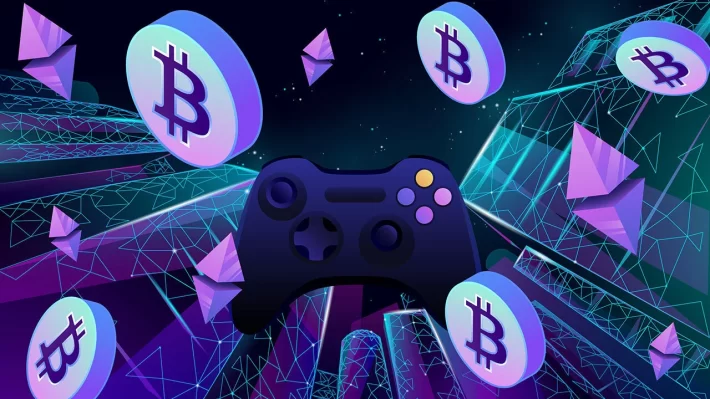
The convergence of blockchain technology and the gaming industry is no longer a nascent trend; it’s a rapidly evolving ecosystem poised for significant growth in 2025. From decentralized virtual worlds to play-to-earn (P2E) mechanics that reward players with real value, crypto gaming is reshaping how we interact with digital entertainment. This article delves into the most crucial developments, emerging trends, and essential updates that gamers and investors need to be aware of as we head into the new year.
The space of crypto gaming shows much innovation. It offers accessibility and new player power. Developers push limits. Understanding new steps in NFTs, blockchain, and DAOs within games is key. This helps you navigate this exciting area. We will explore how these tools make experiences more immersive, fair, and player-focused.
Get ready to discover the games to watch. Find the tech shifts to anticipate. Learn the smart insights that will define success in the crypto gaming arena throughout 2025. Are you a seasoned gamer exploring new ways to earn? Or an investor seeking good chances? This overview gives you the knowledge to stay ahead.
1. The State of Crypto Gaming: 2025 Projections and Market Trends
This section gives a look at the current crypto gaming market. It sets the stage for what’s coming next. We include data-backed insights and expert views on market expansion and how many players join.
1.1 Market Growth and Player Adoption Forecasts
The crypto gaming market expects big growth. Experts predict its size will increase rapidly. More players are joining blockchain games each day. We see crypto parts fitting into regular games more and more. This signals a big change for the industry.
Many reports point to rising user numbers. New players want to own their game items. This interest fuels market expansion. It shows that crypto gaming has a bright future.
1.2 Key Blockchain Networks Dominating Crypto Gaming
Certain blockchain networks stand out in crypto gaming. Ethereum, Polygon, and Solana lead the way. Immutable X also plays a big part. These networks offer different speeds and costs.
Their tech affects how games perform. It also changes how players experience games. Fast transactions and low fees are very important. Good developer groups on these chains help new games appear.
1.3 Rise of Play-to-Earn (P2E) and Play-and-Earn Models
P2E models were very popular. Now, “play-and-earn” is gaining ground. This new model focuses on fun gameplay first. Earning is a bonus, not the main reason to play. It makes games more sustainable.
Developers are finding ways to balance fun with value. They want players to stay because they enjoy the game. This shift helps the whole crypto gaming community grow stronger. It addresses past concerns about game quality.
2. Blockchain Integration: Innovations Shaping Crypto Games
This section explores new tech in blockchain. These advances directly affect the crypto gaming industry. They bring fresh ideas and methods to how we play.
2.1 Non-Fungible Tokens (NFTs) in Gaming: Beyond Collectibles
NFTs changed how we think about digital ownership. In games, they are much more than just things to collect. NFTs give players true ownership of items, characters, and even virtual land. Imagine taking your favorite sword from one game to another.
New uses for NFTs are popping up. They act as access passes or ways to prove a player’s history. This makes in-game assets more valuable. It also opens doors for new player-driven content.
2.2 Decentralized Finance (DeFi) and In-Game Economies
DeFi protocols are making in-game economies stronger. Players can stake their game tokens. They can also lend out assets for a return. This creates real financial depth within virtual worlds.
It gives players new ways to manage their digital wealth. These systems make game currencies more stable. They also offer creative earning paths for active players. Think of a mini-economy living inside your favorite game.
2.3 Layer 2 Solutions and Scalability Improvements
Layer 2 solutions are vital for growth. They make transactions faster and cheaper. This improves the experience for everyone. Games become more fun when you don’t wait for things to process.
These scaling tools remove common barriers to entry. They let more players join the action. Lower fees mean easier trading of game items. This makes crypto gaming more like traditional gaming.
3. Top Crypto Games and Emerging Titles to Watch in 2025
This section highlights specific games. These games are making a big splash or will in 2025. They show different ways to play and use blockchain.
3.1 Featured AAA-Quality Crypto Games
Many big-budget crypto games are coming. These titles offer amazing graphics and deep gameplay. They aim to rival traditional console games. Look for titles that blend exciting stories with blockchain tech.
These games are raising the bar for what crypto games can be. They focus on rich experiences first. Ownership of items just adds to the fun. We are seeing more polished products now.
3.2 Innovative Indie Crypto Gaming Projects
Small studios are also creating amazing games. Indie projects often try new concepts. They experiment with how games are played. Many focus on community feedback and fresh ideas.
These smaller games can be surprising hits. They show how creative developers are. They also prove that you don’t need a huge budget for innovation. Keep an eye on these rising stars.
3.3 Case Studies: Successful Crypto Game Launches
We can learn a lot from games that did well. Strong community building is often key. Good token economics also play a big part. How a game launches matters a lot for its future.
Games with clear goals and player rewards succeed. Marketing also helps, but true engagement keeps players. These success stories show what works. They guide new projects.
4. Decentralized Autonomous Organizations (DAOs) in Gaming
This section explores how DAOs help players. They shape how crypto gaming projects are run. Players get more say in their favorite games.
4.1 Player Governance and Decision-Making
DAOs give players a voice. They can vote on game changes and new features. This means the community helps guide the game’s direction. Players use special tokens to vote.
This setup makes games more fair. It ensures decisions reflect player wishes. It also builds a stronger sense of ownership. Players feel truly connected to their games.
4.2 Community-Driven Development and Funding
DAOs help communities work together. Players can suggest new content or design ideas. They can even get paid for their contributions. This model makes development more open.
DAOs also provide new ways to fund projects. The community can decide which new games to support. This leads to more innovative ideas getting built. It’s a true shared effort.
4.3 Examples of Gaming DAOs in Action
Many games now use DAOs. They let players decide on major updates. They also manage in-game treasuries. These examples show DAOs making real impact.
They prove that shared control works. Players are actively shaping their game’s future. This direct power changes the game experience. It creates a new form of digital community.
5. Challenges and Opportunities in the Crypto Gaming Landscape
This section looks at the hurdles the industry faces. It also covers the many chances for growth and new ideas. Every challenge brings a new opportunity.
5.1 Addressing Regulatory Uncertainty and Player Protection
Rules for crypto and gaming are always changing. We need clear guidelines for player safety. Ensuring fair play is very important. This protects everyone involved.
The industry must work with rule-makers. We need to build trust with players. Strong protections help the market grow. This makes crypto gaming safer for all.
5.2 The Importance of User Experience (UX) and Accessibility
Games must be easy to use. New players need simple ways to start. Complex steps can scare people away. Making crypto gaming friendly to everyone is key.
Interfaces should be clear and fun. Onboarding needs to be simple, not confusing. We want more than just crypto fans playing. This means making games that anyone can enjoy.
5.3 Opportunities for Traditional Game Developers
Older game studios have a big chance. They can add blockchain and NFTs to their games. This could bring new life to old favorites. They can also create new crypto-based titles.
Their experience in making fun games is huge. Blending that with blockchain can lead to big successes. This is a new path for innovation. It’s an exciting time for all developers.
Conclusion: Navigating the Future of Play
The year 2025 promises to be a key year for crypto gaming. We will see new tech, new ways for players to engage, and more decentralized control. Key points include the ongoing growth of smart P2E and play-and-earn mechanics. Scalable blockchain solutions will be critical. NFTs can create truly owned game assets. Projects that put strong tokenomics, fun gameplay, and community-led DAOs first will do well.
For players, this means more chances for real engagement. It also means more ownership inside virtual worlds. For developers and investors, understanding these trends is vital. Adapting to this dynamic space will be key. As the industry grows, the focus will move to creating lasting and deep player experiences. These experiences will blend entertainment with ownership. This sets the stage for a new age of digital fun.

